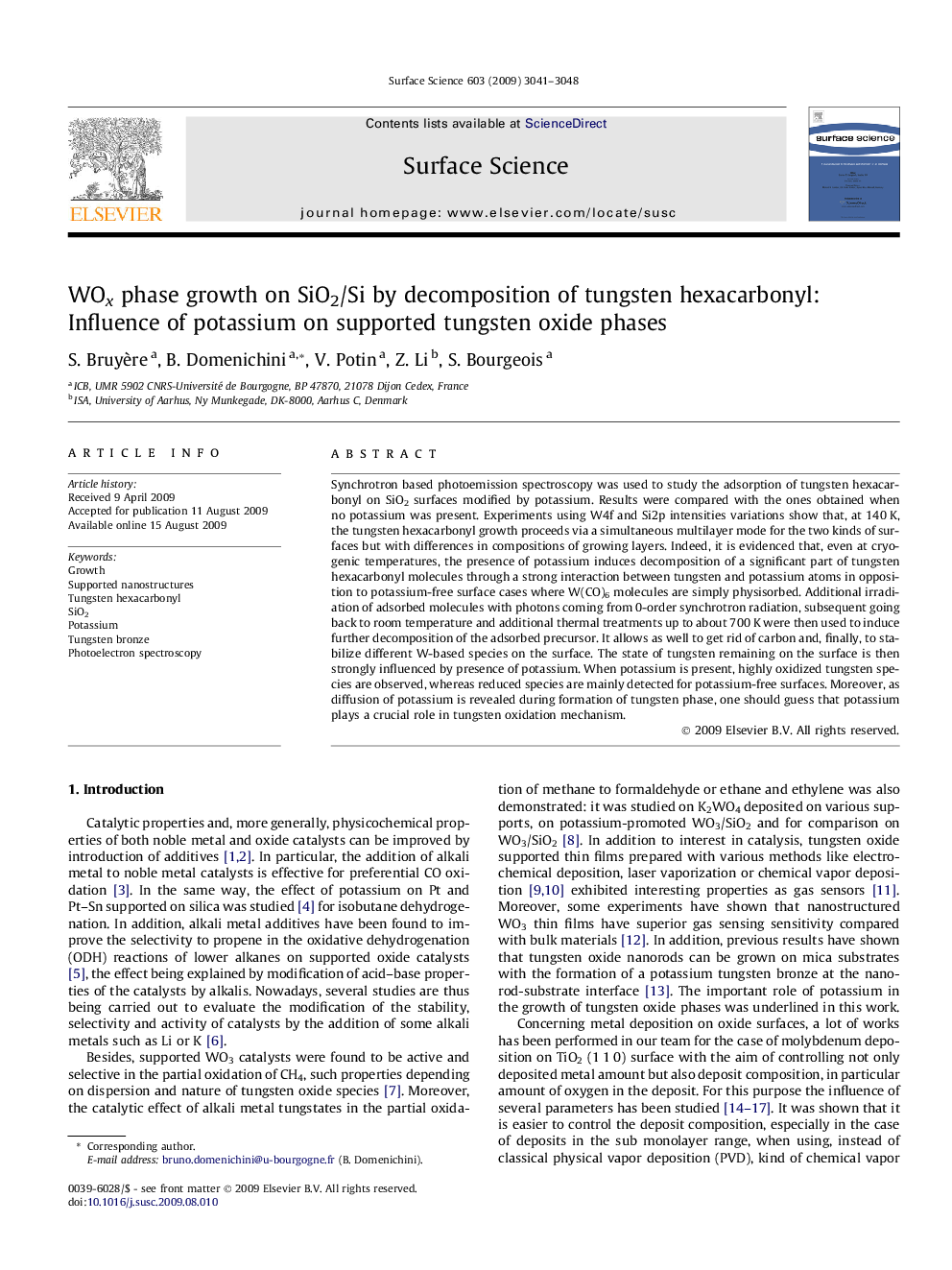| Article ID | Journal | Published Year | Pages | File Type |
|---|---|---|---|---|
| 5424454 | Surface Science | 2009 | 8 Pages |
Synchrotron based photoemission spectroscopy was used to study the adsorption of tungsten hexacarbonyl on SiO2 surfaces modified by potassium. Results were compared with the ones obtained when no potassium was present. Experiments using W4f and Si2p intensities variations show that, at 140Â K, the tungsten hexacarbonyl growth proceeds via a simultaneous multilayer mode for the two kinds of surfaces but with differences in compositions of growing layers. Indeed, it is evidenced that, even at cryogenic temperatures, the presence of potassium induces decomposition of a significant part of tungsten hexacarbonyl molecules through a strong interaction between tungsten and potassium atoms in opposition to potassium-free surface cases where W(CO)6 molecules are simply physisorbed. Additional irradiation of adsorbed molecules with photons coming from 0-order synchrotron radiation, subsequent going back to room temperature and additional thermal treatments up to about 700Â K were then used to induce further decomposition of the adsorbed precursor. It allows as well to get rid of carbon and, finally, to stabilize different W-based species on the surface. The state of tungsten remaining on the surface is then strongly influenced by presence of potassium. When potassium is present, highly oxidized tungsten species are observed, whereas reduced species are mainly detected for potassium-free surfaces. Moreover, as diffusion of potassium is revealed during formation of tungsten phase, one should guess that potassium plays a crucial role in tungsten oxidation mechanism.
